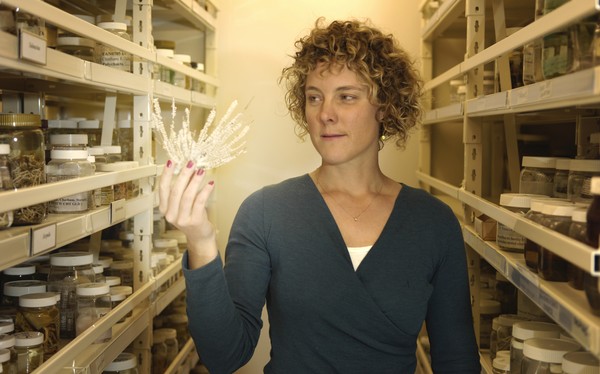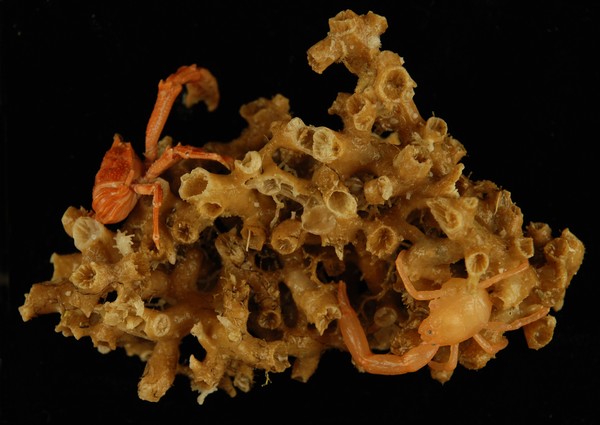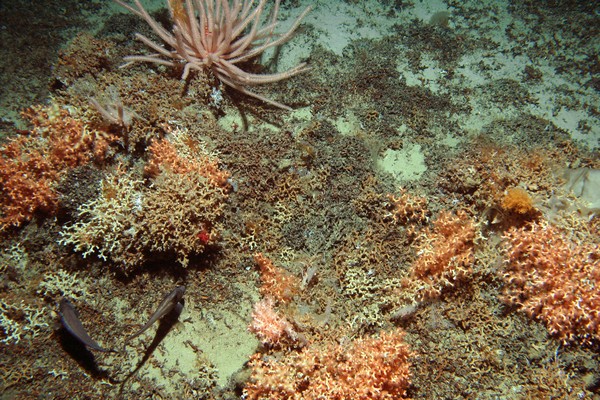Swim, My Pretties! Surprising new species discovered during Chatham Rise expedition
Tuesday 3 November 2009, 9:36AM
By NIWA
1,308 views
A ‘Rasta’, a ‘Wee Scots’, and a ‘Squat Lobster’: three new and unusual discoveries revealed by a NIWA deep-sea marine biodiversity survey.
The finds include a coral genus Narella and nicknamed ‘Rasta’ because of its long white dreadlock-like branches; a tiny ‘Squat Lobster’ measuring 1 cm across; and some specimens of sea urchin which are commonly known as Tam O’Shanters due to their similarity to the Scottish hat.
A recent deepsea survey of seamounts on the Chatham Rise found species some of which have never been recorded in the region and some of which may be new to science. This has increased the total number of species known to exist in the New Zealand region.
“There are three new corals that we are confident are new species from the area” says National Institute of Water & Atmospheric Research (NIWA) Deepwater Scientist, Di Tracey.
In an eighteen day voyage in June this year, NIWA’s research vessel Tangaroa explored several groups of seamounts (underwater hills and mountains) on the Chatham Rise. This area stretches for 1000 kilometres from near the South Island eastwards to the Chatham Islands.
It is estimated that there are over 100,000 seamounts worldwide. They can be ecologically valuable as hotspots of biodiversity and economically valuable and they are often the target of commercial fishing.
‘Shipley Seamount’ was one of the places surveyed on this voyage. It was named several years ago after Jenny Shipley, then NZ Prime Minister 1997-1999 – “it’s about as big as Mt Taranaki, but is over a kilometre under the surface of the ocean” says Dr Malcolm Clark, NIWA Voyage Leader. Other sites visited included the Graveyard Seamounts with names in keeping with a ghoulish theme: Morgue, Graveyard, Zombie, and Gothic.
NIWA has carried out three surveys to the Graveyard region since 2001. They have revealed high levels of biodiversity, and many undescribed species. Of special interest to the scientists are ‘benthic macroinvertebrates’. Benthic macroinvertebrates, or more simply ‘benthos’, are animals without backbones that are larger than ½ millimetre (the size of a pencil dot) and live on or in the seabed. These include corals, sponges, seastars, snails, lobsters, clams, and marine worms. Of those collected in the first survey at least 15% were unknown in the New Zealand region. That first survey recorded 14 species new to science. “We find completely new animals every time we carry out a survey on seamounts,” says Dr Malcolm Clark. A new genus and 6 new species of lace coral were discovered in the second survey in 2006.
The research has been important for helping guide the harvesting and management of fishery resources, as well as conservation of the sea floor communities and of seamounts in the area.
Swath mapping was carried out in each location. Swath mapping systems use echoes of sound projected sidewards. It allows large areas of the seafloor to be rapidly mapped in great detail.
During the June survey there were 60 sled tows carried out and samples were taken from 18 seamounts. Over 38 hours of high resolution video and over 9000 still images were recorded. “It is important to actually collect the animals for detailed study and naming, but seafloor photography is giving us an incredible insight into how the animals live in their natural habitat,” says Dr Malcolm Clark.
Funding for the trip was provided by the Ministry of Fisheries, Land Information New Zealand, the Foundation for Research, Science and Technology, Ocean Survey 20/20 programme and CenSeam (a research programme on seamounts which is part of the global Census of Marine Life).
To find out more visit:
• CenSeam http://censeam.niwa.co.nz/
• How do we map the seafloor?
http://www.niwa.co.nz/our-science/oceans/common-questions/all/hdwmtsf




